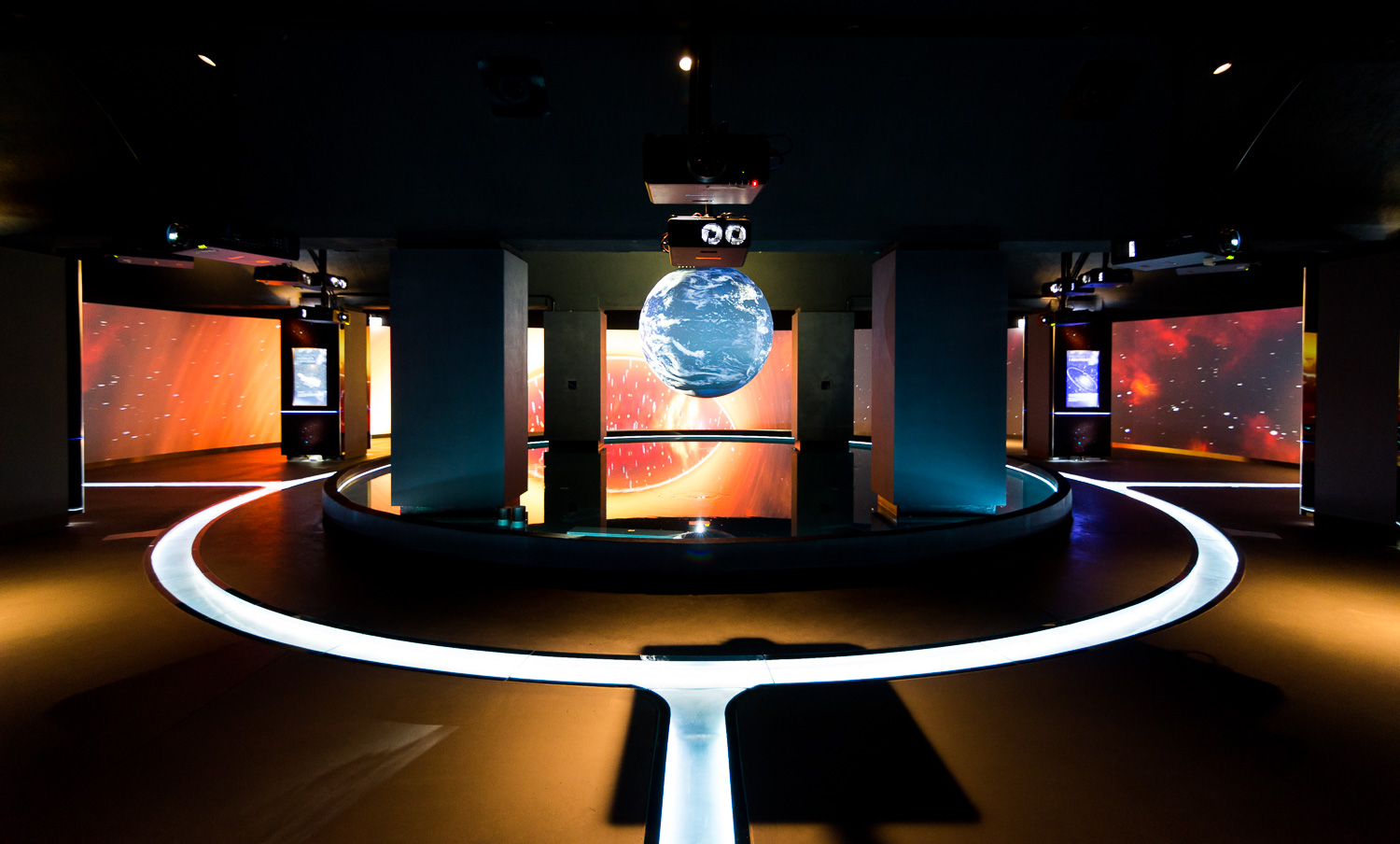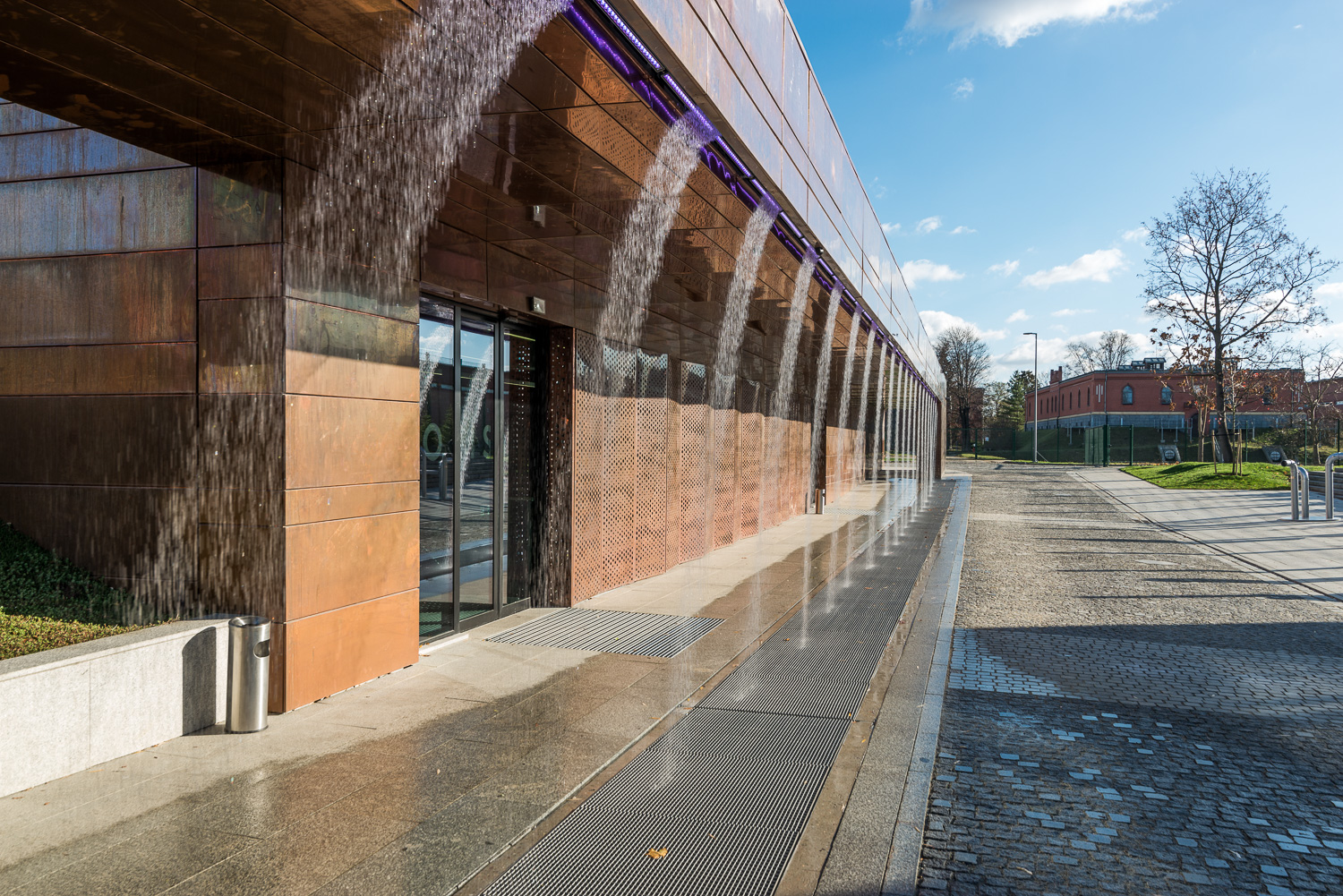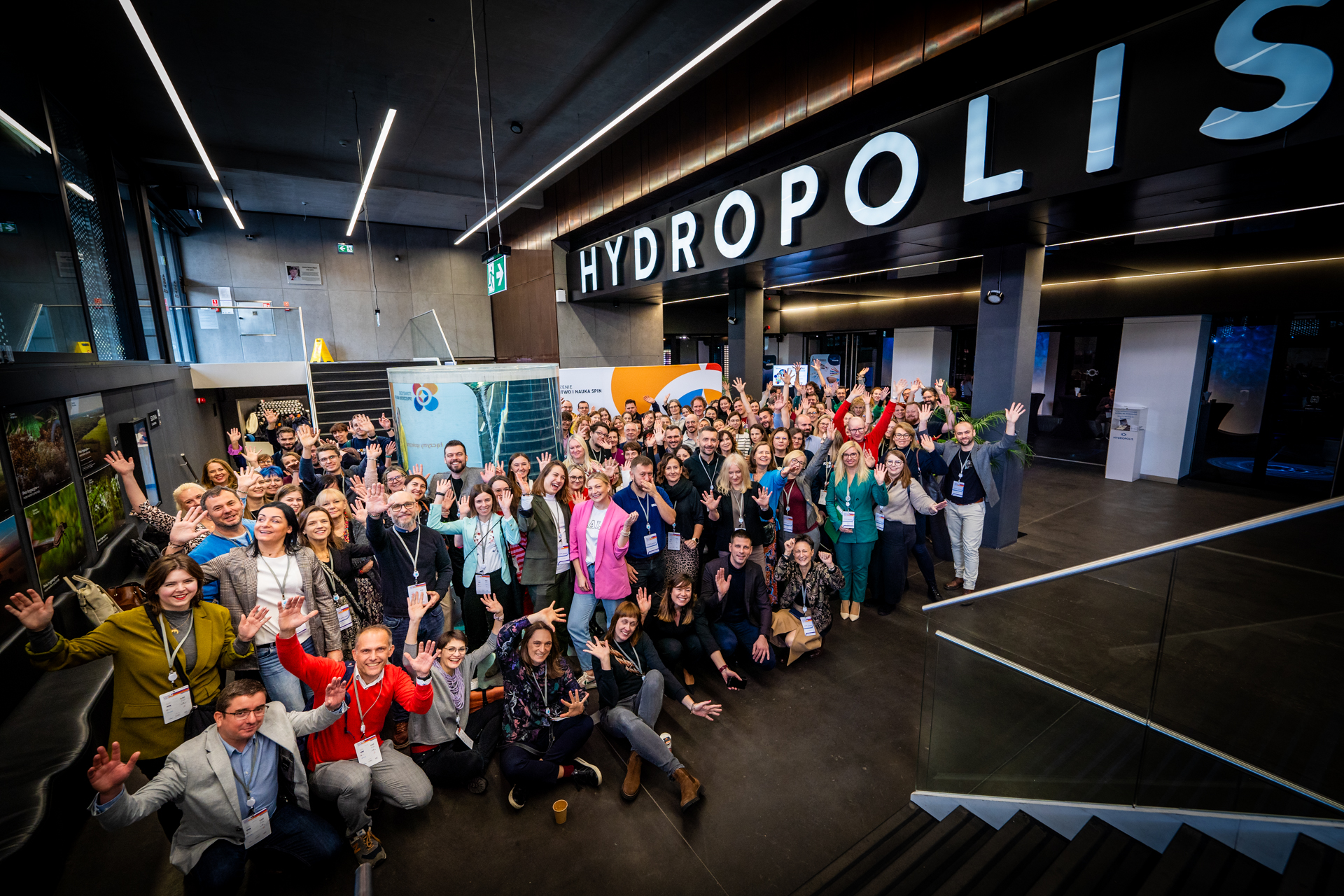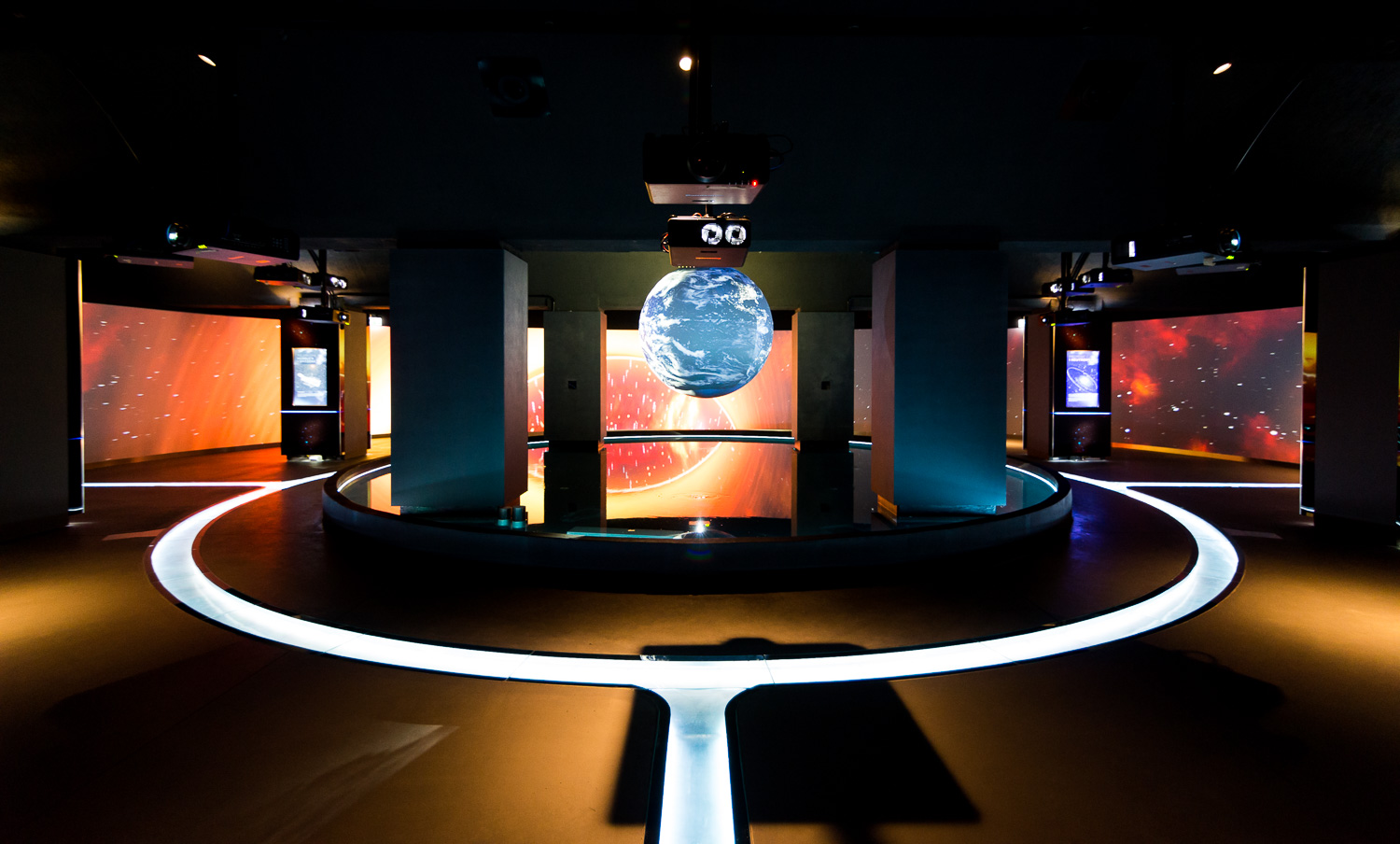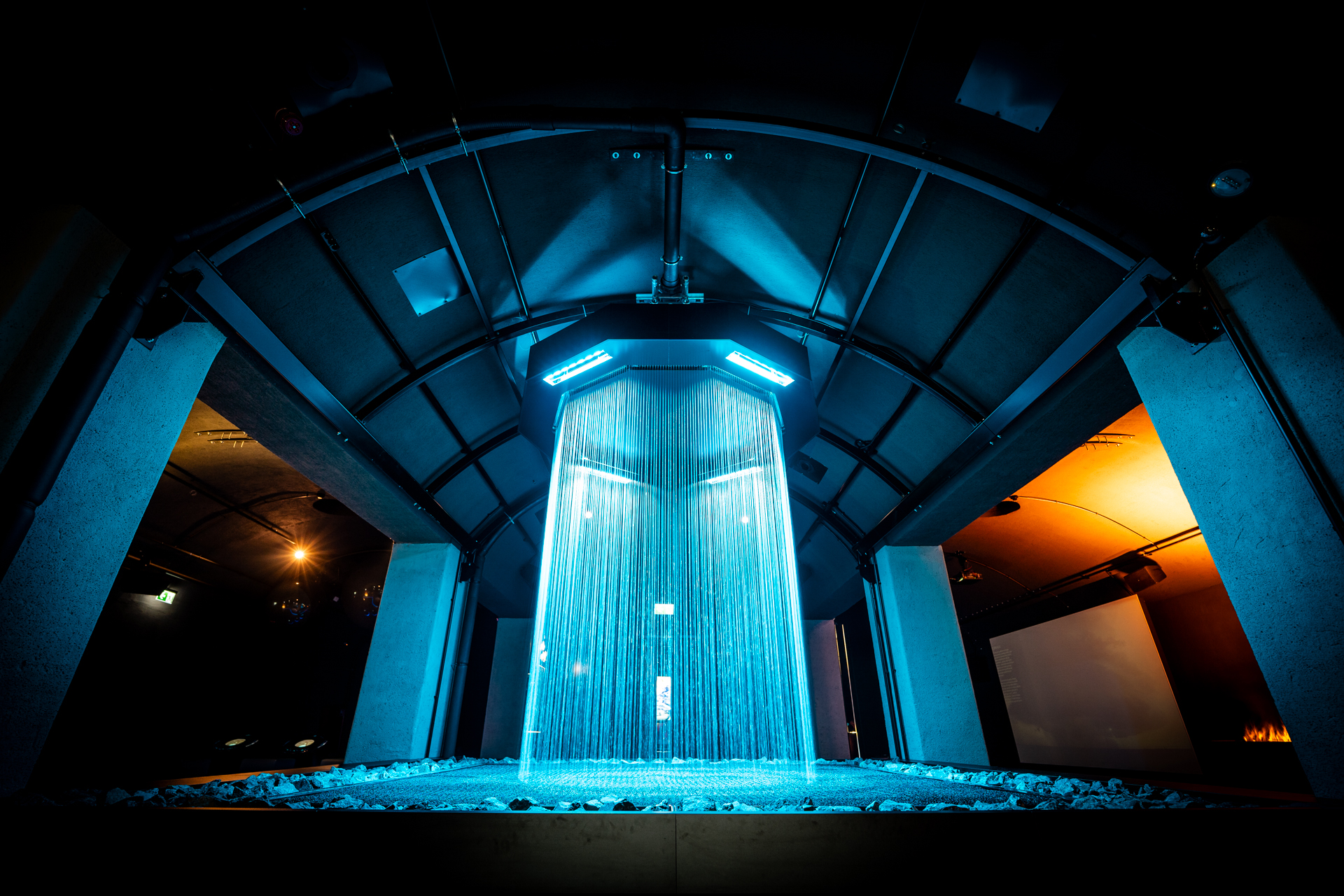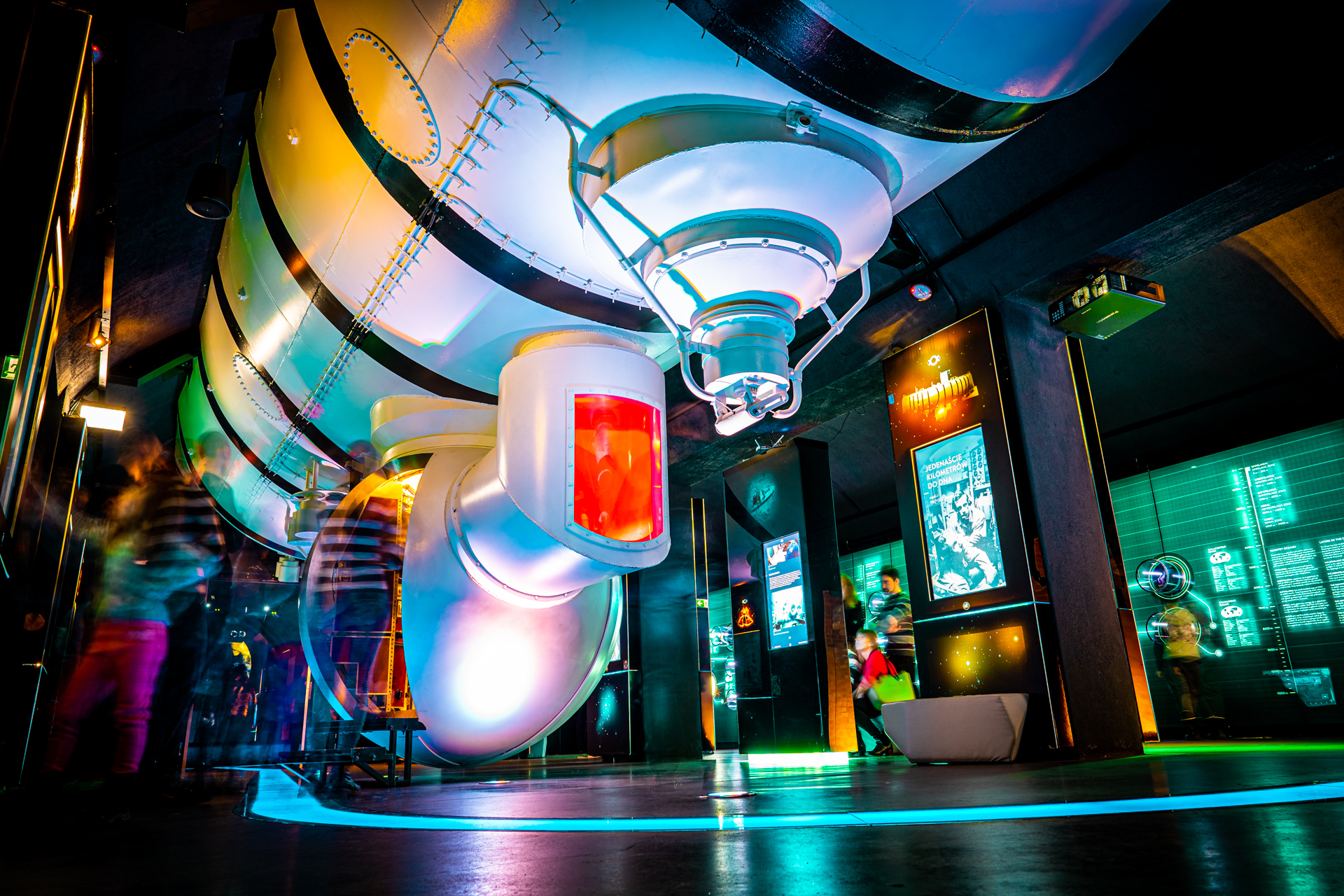Regaining a sense of belonging
Hydropolis
Construction of Hydropolis - Ecological Education Center
This unique knowledge water centre combines educational values with modern forms of exhibition. Hydropolis is also an exceptional example of revitalization of a post-industrial facility. The exhibition devoted to water is located in a 19th century underground clean water reservoir. MPWiK, as a Company of strategic importance from the point of view of Wrocław’s development, strives for perfection in every activity. It has a New Technologies Centre, responsible for cooperation with the scientif
Poland
National
Mainly urban
It refers to a physical transformation of the built environment (hard investment)
Yes
2015-12-05
No
No
No
As a representative of an organisation
It is the only facility of this type in Poland and one of the few in the world. The exhibition is located in a historic, 19th-century neo-Gothic underground tank of clean water with a surface area of 4,600 m². Since 2002, the facility has been on the list of historical monuments. The tank served its original function until 2011, when it was decommissioned. In December 2015, the Wrocław Municipal Water and Sewage Company S.A., after carrying out the necessary renovations and revitalization, transformed the building into the Hydropolis Ecological Education Center. Adapting the historic building to the exhibition function required the introduction of new architectural elements. The main entrance is located in the part added on the south. It was made of copper, which harmonizes with the copper buildings. The tank is sunk into the ground by 360 cm. Its interior is formed by four rectangular chambers, covered with reinforced concrete barrel vaults. The clinker brick walls are up to 126 centimetres thick. The building is covered with layers of clay and earth from the outside. The thickness of this "coat" is up to 160 cm. It is overgrown with meadow vegetation. Ramps and stairs lead to the roof of the reservoir. Fireplaces sticking out among the grass remind us of the historic character of the building and its original function. Hydropolis is a place where multimedia technologies, interactive installations, faithful replicas and models, and information-rich touch screens are used to show water from different perspectives. The exhibition is divided into 7 thematic zones. Each of them shows water in a different aspect. In addition to exhibition activities, the Centre has an extensive educational offer based on the curriculum of the Ministry of National Education. As part of special classes, school students can take part in scientific workshops. Organised groups can also use the services of a guide.
Ecology
Water
Participation
Knowledge
Inclusiveness
Our goal is to educate residents and tourists about environmental protection, especially in the context of water, its resources and the impact on climate and ecosystems. Key goals of the Hydropolis Center related to sustainable development:
1. Environmental education: Hydropolis aims to disseminate knowledge about water, its circulation in nature, resources and the challenges related to its protection. We focus on interactive forms of learning, allowing visitors to independently discover issues related to ecology. Through exhibitions, workshops and educational events, the Center engages society in responsibility for natural resources.
2. Promoting sustainable use of water resources: the center emphasizes the need for rational water management and raises awareness of the threats resulting from its waste, pollution and climate change. This is related to presenting examples of water-saving technologies, as well as actions aimed at protecting aquatic ecosystems.
3. Sustainable architecture and ecology in space design: the Hydropolis building was designed with the principles of sustainable development in mind. The building meets the requirements of energy saving and energy efficiency, using modern technologies. Additionally, it uses water recovery systems that help in sustainable water management.
4. Collaboration with organizations and institutions for sustainable development: the center collaborates with non-governmental organizations, universities and other institutions to promote activities for environmental protection. It is also involved in global initiatives related to ecological education and sustainable development.
5. Interactivity of exhibitions: Hydropolis uses modern technologies (touch screens, multimedia presentations, simulators) to engage visitors in active learning about ecology and water. Thanks to these solutions, people of different ages can explore the topic of environmental protection in an interesting way.
1. Environmental education: Hydropolis aims to disseminate knowledge about water, its circulation in nature, resources and the challenges related to its protection. We focus on interactive forms of learning, allowing visitors to independently discover issues related to ecology. Through exhibitions, workshops and educational events, the Center engages society in responsibility for natural resources.
2. Promoting sustainable use of water resources: the center emphasizes the need for rational water management and raises awareness of the threats resulting from its waste, pollution and climate change. This is related to presenting examples of water-saving technologies, as well as actions aimed at protecting aquatic ecosystems.
3. Sustainable architecture and ecology in space design: the Hydropolis building was designed with the principles of sustainable development in mind. The building meets the requirements of energy saving and energy efficiency, using modern technologies. Additionally, it uses water recovery systems that help in sustainable water management.
4. Collaboration with organizations and institutions for sustainable development: the center collaborates with non-governmental organizations, universities and other institutions to promote activities for environmental protection. It is also involved in global initiatives related to ecological education and sustainable development.
5. Interactivity of exhibitions: Hydropolis uses modern technologies (touch screens, multimedia presentations, simulators) to engage visitors in active learning about ecology and water. Thanks to these solutions, people of different ages can explore the topic of environmental protection in an interesting way.
Key goals of Hydropolis from the perspective of aesthetics and quality of experience:
1. Diversified sensory experiences
Hydropolis was designed to engage all the senses. For this purpose, modern technologies were used, including various sound and light effects that introduce the atmosphere of the underwater world.
2. Education through immersion
Thanks to the use of VR technology, AR technology, 360 degree projections and interactive installations, Hydropolis allows visitors to literally immerse themselves in the underwater world and experience the threats facing our ecosystem. This combination of education with visual and sound experiences makes the topic of water and its protection more understandable and emotionally engaging.
3. Diversification of exhibitions
In Hydropolis, special attention was paid to the diversity of forms of communication. On the one hand, we have classic exhibitions, and on the other, modern multimedia installations that draw you into the topic of water protection and marine ecosystems.
4. Aesthetics of the space
The design of the building is modern and minimalistic, which perfectly fits the theme of water and ecology. The exhibition is located in a historic 19th century clean water reservoir. The character of this place is reflected in the exhibition itself, unique in its austerity combined with modern technologies.
Hydropolis is a model in the context of combining modern design with ecological education. The project shows how to teach in an attractive and accessible way about such important issues as sustainable development or climate change, while ensuring high quality of cultural experience. Thanks to this, Hydropolis becomes a reference point in the field of designing educational spaces that combine didactic functions with aesthetic and cultural values. Hydropolis is also an ideal example of adapting a post-industrial building to the needs of the modern world.
1. Diversified sensory experiences
Hydropolis was designed to engage all the senses. For this purpose, modern technologies were used, including various sound and light effects that introduce the atmosphere of the underwater world.
2. Education through immersion
Thanks to the use of VR technology, AR technology, 360 degree projections and interactive installations, Hydropolis allows visitors to literally immerse themselves in the underwater world and experience the threats facing our ecosystem. This combination of education with visual and sound experiences makes the topic of water and its protection more understandable and emotionally engaging.
3. Diversification of exhibitions
In Hydropolis, special attention was paid to the diversity of forms of communication. On the one hand, we have classic exhibitions, and on the other, modern multimedia installations that draw you into the topic of water protection and marine ecosystems.
4. Aesthetics of the space
The design of the building is modern and minimalistic, which perfectly fits the theme of water and ecology. The exhibition is located in a historic 19th century clean water reservoir. The character of this place is reflected in the exhibition itself, unique in its austerity combined with modern technologies.
Hydropolis is a model in the context of combining modern design with ecological education. The project shows how to teach in an attractive and accessible way about such important issues as sustainable development or climate change, while ensuring high quality of cultural experience. Thanks to this, Hydropolis becomes a reference point in the field of designing educational spaces that combine didactic functions with aesthetic and cultural values. Hydropolis is also an ideal example of adapting a post-industrial building to the needs of the modern world.
1. Architectural and physical accessibility - Hydropolis focuses on accessibility for everyone, regardless of disability. The building was designed with people with various types of disabilities in mind. The Hydropolis mobile application has functions that make it easier for people with visual impairments and deafness to use it. Hydropolis is in the process of developing an accessibility policy for people on the autism spectrum. Quiet hours, a pre-guide and the possibility of renting sensory backpacks have been introduced.
2. Accessibility and affordability - Hydropolis has introduced diverse tickets, including discounts for children, seniors, people with disabilities and families. Free entry is also provided as part of city programs. Additionally, the center runs educational projects aimed at schools, which allow children from different backgrounds to participate in workshops free of charge. A flagship example of such activities is the Hydrocharytatywnnie project aimed at the charges of facilities operating at hospitals or special schools.
3. New social models – education and social integration - Creating a space that promotes social integration, education and civic development. Hydropolis is not only an exhibition centre, but also a place to organise events aimed at educating about water, sustainable development and environmental protection. Thanks to this, the centre has become a space of integration, where people from different backgrounds – children, youth, seniors, people with disabilities – can learn together about the challenges related to water and its protection.
Summary: Hydropolis is a project that can be considered exemplary in the context of inclusiveness. Its approach to architectural, social and educational accessibility is comprehensive and takes into account the needs of a wide group of users. The centre focuses on openness and provides a space that is accessible to everyone – regardless of age, social status or physical ability.
2. Accessibility and affordability - Hydropolis has introduced diverse tickets, including discounts for children, seniors, people with disabilities and families. Free entry is also provided as part of city programs. Additionally, the center runs educational projects aimed at schools, which allow children from different backgrounds to participate in workshops free of charge. A flagship example of such activities is the Hydrocharytatywnnie project aimed at the charges of facilities operating at hospitals or special schools.
3. New social models – education and social integration - Creating a space that promotes social integration, education and civic development. Hydropolis is not only an exhibition centre, but also a place to organise events aimed at educating about water, sustainable development and environmental protection. Thanks to this, the centre has become a space of integration, where people from different backgrounds – children, youth, seniors, people with disabilities – can learn together about the challenges related to water and its protection.
Summary: Hydropolis is a project that can be considered exemplary in the context of inclusiveness. Its approach to architectural, social and educational accessibility is comprehensive and takes into account the needs of a wide group of users. The centre focuses on openness and provides a space that is accessible to everyone – regardless of age, social status or physical ability.
Hydropolis is an interactive water knowledge center in Wrocław, the implementation of which took into account the involvement of both citizens and civil society through:
• Public consultations and opinion surveys – At the project planning stage, the opinions of residents and experts from various fields (hydrology, ecology, education) were taken into account. These opinions influenced the shape of the exhibition and the thematic scope of the presented content.
• Cooperation with non-governmental organizations – Hydropolis cooperated with local and national organizations dealing with environmental protection and ecological education. Thanks to this, the project gained greater social awareness and took into account current educational needs.
• Educational activities and social programs – As part of the project, workshops, meetings and lectures for residents are organized, which increases their awareness of the importance of water and ecology.
• Interactivity and involvement of visitors – Hydropolis enables active participation through interactive exhibitions and experiences, which allows visitors to better understand the presented content.
Thanks to the involvement of citizens and social organizations, Hydropolis adapted the exhibition to the needs of different age groups and people with different needs, took into account ecological and social aspects in the way of presenting the content and became an important educational center promoting conscious management of water resources. Social involvement not only enriched the project substantively, but also contributed to its popularity and social acceptance.
• Public consultations and opinion surveys – At the project planning stage, the opinions of residents and experts from various fields (hydrology, ecology, education) were taken into account. These opinions influenced the shape of the exhibition and the thematic scope of the presented content.
• Cooperation with non-governmental organizations – Hydropolis cooperated with local and national organizations dealing with environmental protection and ecological education. Thanks to this, the project gained greater social awareness and took into account current educational needs.
• Educational activities and social programs – As part of the project, workshops, meetings and lectures for residents are organized, which increases their awareness of the importance of water and ecology.
• Interactivity and involvement of visitors – Hydropolis enables active participation through interactive exhibitions and experiences, which allows visitors to better understand the presented content.
Thanks to the involvement of citizens and social organizations, Hydropolis adapted the exhibition to the needs of different age groups and people with different needs, took into account ecological and social aspects in the way of presenting the content and became an important educational center promoting conscious management of water resources. Social involvement not only enriched the project substantively, but also contributed to its popularity and social acceptance.
The Hydropolis project required cooperation of many stakeholders at different levels – local, regional and national. Their involvement had a key impact on the success of the project, both in terms of financing, implementation and further development.
1. Local level
• Municipality of Wrocław and MPWiK (Municipal Water and Sewage Company) – key initiators of the project, responsible for financing and implementation.
• Residents of Wrocław – participated in public consultations, expressed opinions on the functionality and thematic scope of the exhibition.
• Local non-governmental and educational organizations – were involved in shaping the educational program and promoting sustainable water management.
• Wrocław Tourism Organization – cooperation for the promotion of educational activities in the field of tourism.
2. Regional level
• Authorities of the Lower Silesian Voivodeship – supported the project in the context of the development of tourism and regional education.
• Regional scientific institutions (e.g. Wrocław University of Science and Technology, University of Wrocław, University of Environmental and Life Sciences) – provided scientific expertise that enriched the substantive value of the exhibition and technological and exhibition solutions.
• Lower Silesian Tourist Organisation – support in the area of tourist traffic organisation and building the image of Hydropolis in the province.
3. National level
• Society and Science Association – support in the direction of popularisation of science and communication of science to local communities
• Polish Tourist Organisation – cooperation for the promotion of regional tourism on the domestic and foreign market
• Polish Investment and Trade Agency, Ministry of Development – cooperation for the promotion of ecology and tourists of Lower Silesia during the EXPO 2020 trade fair in Dubai.
1. Local level
• Municipality of Wrocław and MPWiK (Municipal Water and Sewage Company) – key initiators of the project, responsible for financing and implementation.
• Residents of Wrocław – participated in public consultations, expressed opinions on the functionality and thematic scope of the exhibition.
• Local non-governmental and educational organizations – were involved in shaping the educational program and promoting sustainable water management.
• Wrocław Tourism Organization – cooperation for the promotion of educational activities in the field of tourism.
2. Regional level
• Authorities of the Lower Silesian Voivodeship – supported the project in the context of the development of tourism and regional education.
• Regional scientific institutions (e.g. Wrocław University of Science and Technology, University of Wrocław, University of Environmental and Life Sciences) – provided scientific expertise that enriched the substantive value of the exhibition and technological and exhibition solutions.
• Lower Silesian Tourist Organisation – support in the area of tourist traffic organisation and building the image of Hydropolis in the province.
3. National level
• Society and Science Association – support in the direction of popularisation of science and communication of science to local communities
• Polish Tourist Organisation – cooperation for the promotion of regional tourism on the domestic and foreign market
• Polish Investment and Trade Agency, Ministry of Development – cooperation for the promotion of ecology and tourists of Lower Silesia during the EXPO 2020 trade fair in Dubai.
The Hydropolis project combines many scientific disciplines and areas of knowledge, which allows for a comprehensive presentation of the topic of water in various contexts – scientific, ecological, technological and cultural. Interdisciplinarity was a key factor influencing the quality and attractiveness of the exhibition.
Main areas of knowledge in Hydropolis:
1. Hydrology and natural sciences – the exhibition presents the hydrological cycle, aquatic ecosystems and the importance of water for nature and climate.
2. Water engineering and technologies – the exhibitions present the operation of water supply systems, sewage treatment plants and innovative solutions in water management.
3. History and archaeology – the exhibition shows the importance of water in ancient civilizations, the development of irrigation systems and water technologies in different eras.
4. Social and cultural sciences – water is presented as an element of mythology, art, religion and an inspiration for different cultures around the world.
5. Education and scientific communication – Hydropolis fulfills an educational function, adapting the message to different groups of recipients through interactive exhibitions, multimedia and workshops.
The added value of interdisciplinary cooperation was, among others, a comprehensive approach to the subject of water, which combines scientific, historical and technological knowledge. Additionally, it was possible to achieve an attractive and modern message, thanks to the use of interactive technologies
and multimedia. Adaptation to different groups of recipients - both children, youth and adults - helped to find and create interesting content adapted to their level of knowledge.Ultimately, the cooperation influenced the increase in ecological awareness by showing the impact of humans on water management and encouraging the sustainable use of water resources.
Main areas of knowledge in Hydropolis:
1. Hydrology and natural sciences – the exhibition presents the hydrological cycle, aquatic ecosystems and the importance of water for nature and climate.
2. Water engineering and technologies – the exhibitions present the operation of water supply systems, sewage treatment plants and innovative solutions in water management.
3. History and archaeology – the exhibition shows the importance of water in ancient civilizations, the development of irrigation systems and water technologies in different eras.
4. Social and cultural sciences – water is presented as an element of mythology, art, religion and an inspiration for different cultures around the world.
5. Education and scientific communication – Hydropolis fulfills an educational function, adapting the message to different groups of recipients through interactive exhibitions, multimedia and workshops.
The added value of interdisciplinary cooperation was, among others, a comprehensive approach to the subject of water, which combines scientific, historical and technological knowledge. Additionally, it was possible to achieve an attractive and modern message, thanks to the use of interactive technologies
and multimedia. Adaptation to different groups of recipients - both children, youth and adults - helped to find and create interesting content adapted to their level of knowledge.Ultimately, the cooperation influenced the increase in ecological awareness by showing the impact of humans on water management and encouraging the sustainable use of water resources.
1 948 / 5 000
Hydropolis stands out from other initiatives related to ecological education and the topic of water thanks to its innovative approach to the form and content of the exhibition. The innovativeness of the project is manifested in several key aspects:
1. Combination of science, technology and art
While traditional waterworks museums and science centres focus mainly on water engineering or ecology, Hydropolis combines various fields – hydrology, history, engineering, culture and art – into one coherent narrative.
2. Multimedia and interactive form of communication in the monument
Unlike traditional exhibitions, Hydropolis also uses modern technologies.
3. Adaptation of a unique post-industrial space
Hydropolis was created in a 19th-century underground water reservoir, which was adapted into a modern knowledge centre. This unique combination of the history of technology with modern exhibition technologies is a distinguishing feature of the project.
4. Ecological message and education through experience
Hydropolis not only informs, but also engages visitors in reflection on the future of water on Earth. Thanks to interactive zones and modern educational methods, it encourages conscious management of water resources, which goes beyond classic forms of ecological education.
5. Educational workshops conducted in professional laboratory rooms
One of the educational activities of Hydropolis is an educational offer that changes annually and is adapted to the current core curricula announced by the Ministry of Education.
6. Non-profit activity
The HydroCharytatywnie project is an initiative implemented by Hydropolis since 2018, which has covered the Wrocław agglomeration. As part of the activities, free workshops and shows on the subject of nature are organized, led by Hydropolis guides. They visit both educational facilities with integrated classes and children's hospital wards.
Hydropolis stands out from other initiatives related to ecological education and the topic of water thanks to its innovative approach to the form and content of the exhibition. The innovativeness of the project is manifested in several key aspects:
1. Combination of science, technology and art
While traditional waterworks museums and science centres focus mainly on water engineering or ecology, Hydropolis combines various fields – hydrology, history, engineering, culture and art – into one coherent narrative.
2. Multimedia and interactive form of communication in the monument
Unlike traditional exhibitions, Hydropolis also uses modern technologies.
3. Adaptation of a unique post-industrial space
Hydropolis was created in a 19th-century underground water reservoir, which was adapted into a modern knowledge centre. This unique combination of the history of technology with modern exhibition technologies is a distinguishing feature of the project.
4. Ecological message and education through experience
Hydropolis not only informs, but also engages visitors in reflection on the future of water on Earth. Thanks to interactive zones and modern educational methods, it encourages conscious management of water resources, which goes beyond classic forms of ecological education.
5. Educational workshops conducted in professional laboratory rooms
One of the educational activities of Hydropolis is an educational offer that changes annually and is adapted to the current core curricula announced by the Ministry of Education.
6. Non-profit activity
The HydroCharytatywnie project is an initiative implemented by Hydropolis since 2018, which has covered the Wrocław agglomeration. As part of the activities, free workshops and shows on the subject of nature are organized, led by Hydropolis guides. They visit both educational facilities with integrated classes and children's hospital wards.
Hydropolis was designed using an interdisciplinary, innovative and participatory approach that combines modern technologies, environmental education and the involvement of various stakeholders.
1. Interdisciplinary approach
2. User-Centered Design
Hydropolis uses a recipient-oriented approach, in which the key was to adapt the content to different age groups and levels of knowledge. The following were used:
• interactive exhibitions adapted to intuitive exploration,
• multimedia and sensory experiences that engage different senses,
• different narrative formats - from classic exhibitions to modern immersive technologies (mapping, VR, AR).
3. Participatory design and cooperation with stakeholders
Hydropolis was created in cooperation with:
• scientific experts (hydrologists, water engineers, historians),
• local educational and ecological organizations,
• public institutions and local authorities,
• local community - taking into account their educational and recreational needs.
4. Experiential Learning Methodology
Instead of traditional forms of knowledge transfer, Hydropolis is based on active learning, where visitors can independently discover and experience topics related to water through experiments, simulations and interactive installations.
5. Sustainability and ecodesign
The project was planned in accordance with the principles of sustainable development – not only through educational content promoting responsible water management, but also through the use of existing infrastructure (a historic water reservoir) and energy-saving technologies.
1. Interdisciplinary approach
2. User-Centered Design
Hydropolis uses a recipient-oriented approach, in which the key was to adapt the content to different age groups and levels of knowledge. The following were used:
• interactive exhibitions adapted to intuitive exploration,
• multimedia and sensory experiences that engage different senses,
• different narrative formats - from classic exhibitions to modern immersive technologies (mapping, VR, AR).
3. Participatory design and cooperation with stakeholders
Hydropolis was created in cooperation with:
• scientific experts (hydrologists, water engineers, historians),
• local educational and ecological organizations,
• public institutions and local authorities,
• local community - taking into account their educational and recreational needs.
4. Experiential Learning Methodology
Instead of traditional forms of knowledge transfer, Hydropolis is based on active learning, where visitors can independently discover and experience topics related to water through experiments, simulations and interactive installations.
5. Sustainability and ecodesign
The project was planned in accordance with the principles of sustainable development – not only through educational content promoting responsible water management, but also through the use of existing infrastructure (a historic water reservoir) and energy-saving technologies.
Elements such as an interactive and holistic educational approach, the use of modern multimedia technologies to popularize science, educational materials and an approach to sustainable development are valuable solutions that can be applied in other places and contexts, such as schools, museums and science centers, universities or ecological organizations. Cooperation with local communities, scientific research and transferring exhibitions and technologies to other regions are other areas in which the replication and adaptation of Hydropolis experiences can be considered. The process of organizing an exhibition is also an element that is worth replicating in other such institutions, but not only because also in companies with completely different business profiles.
Hydropolis is an educational and technological center in Wrocław that focuses on the topic of water and its role in various aspects of human life and the environment. Its goal is to increase awareness of global challenges related to water and promote local solutions that can affect these problems.
The global challenges that Hydropolis faces include:
1. Climate change
2. Water pollution
3. Shortage of drinking water
4. Sustainable management of water resources
Local solutions provided by Hydropolis are examples of how to deal with global problems at the local level:
1. Education and social awareness - Hydropolis conducts numerous educational campaigns that aim to raise awareness of water-related problems and encourage responsible use of water resources in everyday life.
2. Water purification technologies - Hydropolis promotes innovative technological solutions, such as water purification systems, that can be used at the local level in cities, villages or households.
3. Infrastructure solutions – Rainwater, use of groundwater resources, water saving systems in buildings – all these are part of local solutions implemented in cities that can help manage water sustainably. Through such initiatives, Hydropolis helps not only to understand global water challenges, but also to point out practical solutions that can improve the state of water resources in a given region.
The global challenges that Hydropolis faces include:
1. Climate change
2. Water pollution
3. Shortage of drinking water
4. Sustainable management of water resources
Local solutions provided by Hydropolis are examples of how to deal with global problems at the local level:
1. Education and social awareness - Hydropolis conducts numerous educational campaigns that aim to raise awareness of water-related problems and encourage responsible use of water resources in everyday life.
2. Water purification technologies - Hydropolis promotes innovative technological solutions, such as water purification systems, that can be used at the local level in cities, villages or households.
3. Infrastructure solutions – Rainwater, use of groundwater resources, water saving systems in buildings – all these are part of local solutions implemented in cities that can help manage water sustainably. Through such initiatives, Hydropolis helps not only to understand global water challenges, but also to point out practical solutions that can improve the state of water resources in a given region.
Hydropolis is an excellent example of a project that fits into the values of the New European Bauhaus, combining sustainability, aesthetics and inclusiveness in one modern educational centre. This project not only achieved its goals, but also brought lasting, positive effects for the local community, tourism, education and environmental protection.
Results and achievements
a. Education and raising ecological awareness
b. Strengthening tourism and the local economy
c. Revitalisation and protection of architectural heritage
d. Sustainable development and eco-innovation
Project effects and long-term impact
1. For direct beneficiaries
• Residents of Wrocław and Lower Silesia gained a modern educational centre that raises ecological awareness and inspires actions for water protection.
• Schools and teachers received an innovative teaching tool that allows students to better absorb knowledge.
• Employees of Hydropolis and the tourism sector benefited from the creation of new jobs and the cultural and educational development of the city.
2. For indirect beneficiaries:
• Local authorities and the tourism industry have gained a new point on the map of attractions of the region, increasing its competitiveness.
• Scientific institutions and ecologists can use Hydropolis as a platform for popularizing knowledge and research and educational campaigns related to the broad topic of water.
3. Added value in the context of the New European Bauhaus
Hydropolis fits perfectly into the philosophy of the NEB because:
• It combines science, art and ecology, making water science attractive and engaging.
• It has renovated a historical space, giving it a new function in the spirit of sustainable design.
• It has a strong social impact, increasing ecological awareness and integrating different target groups.
Results and achievements
a. Education and raising ecological awareness
b. Strengthening tourism and the local economy
c. Revitalisation and protection of architectural heritage
d. Sustainable development and eco-innovation
Project effects and long-term impact
1. For direct beneficiaries
• Residents of Wrocław and Lower Silesia gained a modern educational centre that raises ecological awareness and inspires actions for water protection.
• Schools and teachers received an innovative teaching tool that allows students to better absorb knowledge.
• Employees of Hydropolis and the tourism sector benefited from the creation of new jobs and the cultural and educational development of the city.
2. For indirect beneficiaries:
• Local authorities and the tourism industry have gained a new point on the map of attractions of the region, increasing its competitiveness.
• Scientific institutions and ecologists can use Hydropolis as a platform for popularizing knowledge and research and educational campaigns related to the broad topic of water.
3. Added value in the context of the New European Bauhaus
Hydropolis fits perfectly into the philosophy of the NEB because:
• It combines science, art and ecology, making water science attractive and engaging.
• It has renovated a historical space, giving it a new function in the spirit of sustainable design.
• It has a strong social impact, increasing ecological awareness and integrating different target groups.

